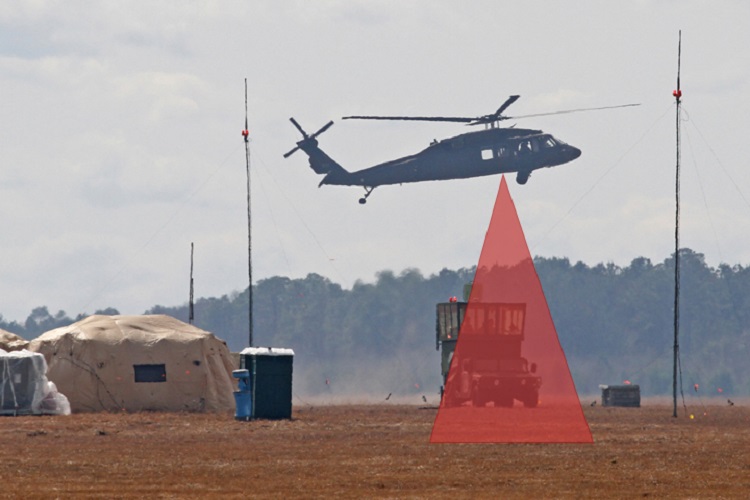Improvements in LiDAR Technology Hold the Key to Fully Autonomous Vehicles and 3D Imaging Industries

15 Sep
2020
The basic idea behind light detection and ranging (LiDAR) is quite simple. You throw something at an object and find out how much time it takes to come back. The LiDAR technology has developed by taking inspiration from the way bats use sound waves. If you know how fast sound travels in water and how long it takes to hit something and come back, you can know exactly how far away the object is. The demand for LiDAR technology skyrocketed after the invention of autonomous vehicles.
Whether it is a self-driving car or some electronic gadget, LiDAR technology is now fundamental for the technological future. According to Allied Market Research, the global LiDAR market is expected to hit $2.90 billion by 2027, registering a CAGR of 20.1% from 2020 to 2027. This exponential growth is due to a surge in the need for aerial LiDAR and increased demand for 3D imaging. In addition, technological advancements in light sensors have opened new opportunities.
Novel Light Sensor to Make LiDAR Cheaper
One of the major obstacles for developing autonomous cars is cost. Thus, Toshiba has recently developed an extremely efficient, compact silicon photo-multiplier (SiPM) that allows non-coaxial LiDAR to use off-the-shelf camera lenses to reduce costs while maintaining high resolution of LiDAR. A typical automotive LiDAR uses radar data combined with GPS to develop a virtual 3D map of the area to drive the vehicle and avoid an obstacle.
On the other hand, Toshiba’s SiPM aims to improve conventional technology with a solid-state light sensor using a single-photon avalanche diode (SPAD). The SiPM contains several SPADs that are regulated by an active quenching circuit (AQC). The SPAD cathode voltage is decreased as soon as it detects photon and resets AQC. The new device is 2 to 4 times faster than a typical SiPM due to its AQC method.
Future Demands Improved-LiDAR Devices
LiDAR systems are already a fundamental component of any self-driving car. However, they are expensive as well as bulky for automotive applications. Thus, researchers at the University of Colorado has developed a new silicon chip that can overcome the shortcomings of conventional technology.
The study states that a silicon chip with electronics or moving parts that would enable its widespread adoption. The researchers suggested that optical phases arrays (OPA) incorporated into CMOS platforms, developing an inexpensive and compact electronic-photonic system-on-chip that demands minimum power, which gives a birth new generation of photonic sensing technologies. As OPAs can control the phase and amplitude of light waves transmitted from an object, the device can manipulate the direction of the light beam emitted by directing the optical properties from the surface.
With the advancements in LiDAR technology and an increase in researches to develop improved LiDAR-based devices, the market players in the LiDAR industry would witness lucrative opportunities. Needless to say, the future is driven by the concept of complete autonomy and to achieve that advancements in LiDAR are instrumental. Moreover, increased demand for 3D printing and 3D imaging, the demand for light detection has increased more than ever, which is bound to fuel the demand for improved LiDAR technology.

Koyel Ghosh
Author’s Bio- Koyel Ghosh is a blogger with a strong passion and enjoys writing in miscellaneous domains, as she believes it lets her explore a wide variety of niches. She has an innate interest in creativity and enjoys experimenting with different writing styles. A writer who never stops imagining, she has been serving the corporate industry for the last five years.
Avenue: Entire Library membership of Allied Market Research Reports at your disposal
- Avenue is an innovative subscription-based online report database.
- Avail an online access to the entire library of syndicated reports on more than 2,000 niche industries and company profiles on more than 12,000 firms across 11 domains.
- A cost-effective model tailored for entrepreneurs, investors, and students & researchers at universities.
- Request customizations, suggest new reports, and avail analyst support as per your requirements.
- Get an access to the library of reports at any time from any device and anywhere.
Related Post
-
How are Submarine Cables Transforming Global Connectivity with Enhanced User Experience?
-
Endoscopy Procedures: Transformations in Techniques and Applications
-
AI-Powered Video Analytics: How the Product Actually Works for enterprises
-
Painting Robots: Transforming Precision Coating and Creative Applications
-
Innovations in Pharmacovigilance Systems Advancing Patient Safety
-
Understanding Edge Security: Keeping Data Safe Near the Source
-
Exploring the Use and Advancements of 3D Laser Scanners in Professional Applications
-
Reinforcing Industrial Controls with Smarter Tools and Training








